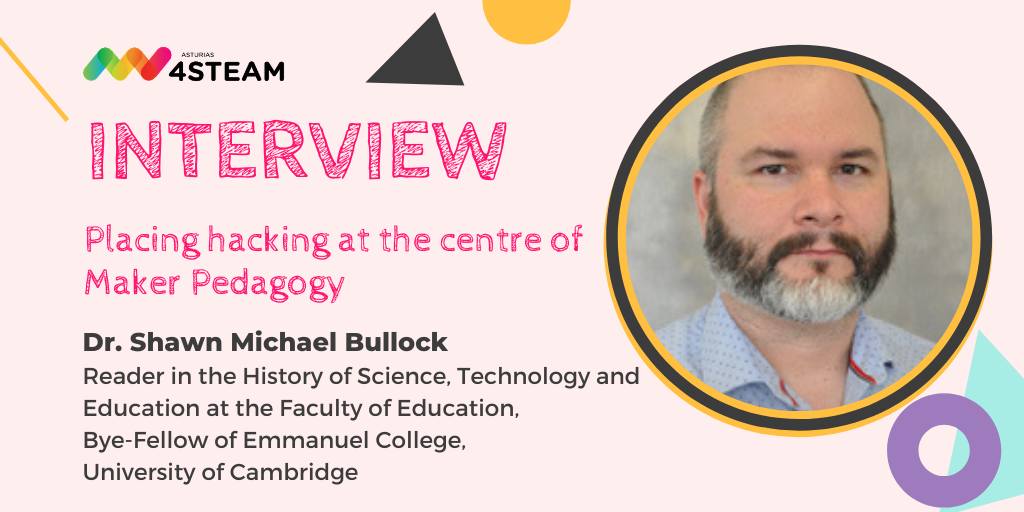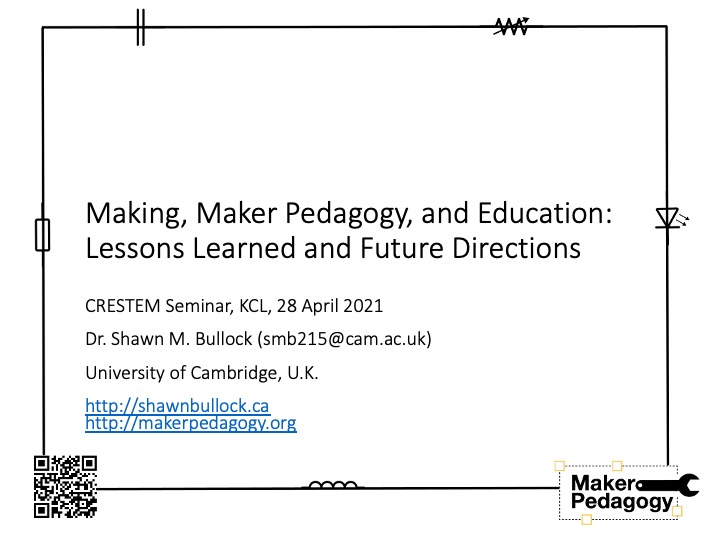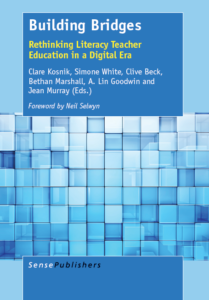
I was recently asked to share a brief overview of some of my research in education for prospective applicants to our undergraduate “Tripos” course at the University of Cambridge. It was both an enjoyable and challenging task to not where my current thinking within the large field of “technology and education” and I ended up drawing out some of the big themes for a book I am currently working on.
I finally arrived at “Five ideas for thinking about technology and education,” which I present below.
- We need to acknowledge and critique the new ways in which information and data are mediated in our lives
Both social media and the current enthusiasm for “Big Data” pose serious questions for educators. The algorithms of social media, for example, can make it more difficult for people to be critical consumers of what they read and, crucially, what they share. One study, for example, indicates that false news stories are 70% more likely to be retweeted than true ones whilst simultaneously arguing that humans spread false news more effectively than bots (Vosoughi et al. (2018). Relatedly, as boyd and Crawford (2012) pointed out a decade ago, just because data is “big” does not mean it is better—or ethical, for that matter. One way to think about the difference between a large amount of data and Big Data is that the latter typically uses machine learning to pose questions of large data sets, often in ways that were not originally envisioned when the large data sets were collected. Big Data changes what counts as knowledge. Like it or not, we are almost all implicated in providing information for large data sets – the act of carrying a mobile phone, for example, creates all sorts of data.
2. We need a new framing of what “privacy” means in the digital age
For most of human history, there was an easy way to define the public space: You had to be there. Witnessing a public event required physical presence. That changed, however, in the 19th century when it became possible to record still images, then audio and, finally, moving images a short while later. Publics became persistent; that is, you could access a recording of a public event. Eventually, these persistent publics became replicable when it became easy for people to make copies of recordings. Think of how easy it is, particularly nowadays, to make a copy of a video that you’ve made on your phone. Once you send it to someone, it becomes easy for them to copy the video as well. At any point, a copy of a recording of a public event can be uploaded online—say to a social media platform—and tagged with someone’s name, the name of an event, a date, etc. The copy of a persistent public has become searchable. danah boyd (2014) refers to this as a networked public and the concept has been a touchstone for how I think about privacy in the digital age for many years.
3. We require a robust consideration of the history and philosophy of education, technology, and education & technology
Claims about the potential of digital technologies to upend, and therefore improve, education are not difficult to find in the literature or the popular press. Selwyn (2011) once opined that research on technology is an inherently positive project; much of the research seems to take a piori the assumption that the use of technology will improve students’ learning and make educational systems more just. In part, this problem is due to the ahistorical nature of a lot of the thinking about technology in education. The claims made about the potential efficacy of educational radio in the 1940s, for example, read very similarly to the claims made about the use of digital video in “just-in-time” approaches to education more recently. It is also difficult to find a philosophical consideration of education and technology within most mainstream research on the use of technology in the classroom; the overwhelming focus is on trying to establish “what works” – which is even more of a problem when combined with the presentism inherent in most research in the field.
4. Serious attention needs to be paid to the languages used in discussion of technology, discussion about technology, and discussion through technology
As historian of technology Leo Marx (2010) noted, the word “technology” is quite fraught in English compared with many other languages. We use the word “technology” as a synonym for a piece of equipment, an approach to learning, a style of teaching, and the study of technology itself. The terms “Big Data,” “Machine Learning,” and “AI” often get used interchangeably particularly in the popular press. Relatedly, we might also consider the ways in which languages mediate how technology is used. Consider, for example, the percentage of the World Wide Web that was originally created in English, and the fact that many technologies underpinning the various components of the Internet require the use of English terminology. Consider the outsized influence that technology companies created and headquartered in the United States have on all aspects of digital life. We are, for example, subject to the consequences of US laws as soon as we use a platform hosted in the USA, regardless of where we live. Consider the new social competencies required to communicate both personally and professionally in the digital world.
5. We need a critical discussion about “making” and “the maker movement”
Within recent movements in educational technology, the term maker and the concurrent “Maker Movement” brings to mind certain corporate-sponsored approaches to learning and teaching with technology, as well as implying a certain amount of presentism. The idea of buying a kit to become a maker—by following a set of instructions to have a pre-determined output—seems anathema to the stated goals of many who are enthusiastic about making. There is also a pretty strong sense, in some quarters, that making is somehow a new human undertaking and that one requires both disposable income and dedicated personal workspace to be involved. Finally, many parts of the “Maker Movement” seems to draw at least some inspiration from the obsession around “disruption” that emanates from the mythical origin stories of Silicon Valley’s innovators. Making does matter, though, as it has become far too easy to live a life of consuming content rather than creating something. Making, in my view, should form a more significant part of many of our lives and it should be founded in the joy of mastering how some thing or some system works. We also might consider that talking about what we are making together is at least as valuable as whatever “output” one gets from making.
/ShawnMBullock
References
boyd, D. (2014). It’s complicated: the social lives of networked teens. New Haven, CT: Yale University Press.
boyd, D., & Crawford, K. (2012). Critical questions for Big Data: Provocations for a cultural, technological, and scholarly phenomenon. Information, Communication & Society, 15(5), 662-679.
Marx, L. (2010). Technology: The emergence of a hazardous concept. Technology and Culture, 51(3), 561-577.
Selwyn, N. (2011). In praise of pessimism—the need for negativity in educational technology. British Journal of Educational Technology, 42(5), 713-718.
Vosoughi, S., Roy, D., & Aral, S. (2018). The spread of true and false news online. Science, 359(6380), 1146-1151.






